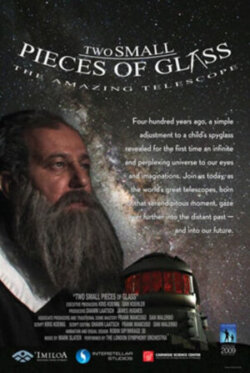
- This event has passed.
Homeschool Program: Telescopes & Astronomy – How we know what we know on Friday, Nov 21 at 10:30 a.m.

Homeschool Program: Telescopes & Astronomy – How we know what we know at 10:30 a.m.
Friday, Nov 21 from 10:30 a.m. – 11:45 a.m.
Today’s Homeschool Program will share information about telescopes, the tools of Astronomy, and how we know what we know about the universe.
Join Dr. Dan Polsgrove, Astronomer, Planetarium educator and former Astronomy professor here at the Academy, for a detailed look at the tools of astronomers – telescopes – how they work, why there are different types of telescopes, and how the telescope has improved from Galileo through the Hubble tot he James Webb Space Telescope and the newly opened Vera C. Rubin Observatory.
In addition to the Live portion of the show will be the short film, Two Small Pieces of Glass. From Galileo to the Hubble Space Telescope, this film teaches us how different telescopes work, how astronomers use them and how they answer our questions of the universe.
With our limited seating, please only reserve seats if you know you will be attending. If you RSVP and your plans change for any reason, please email Jeff our Planetarium Director at planetarium@afacademy.af.edu so we can release your seats.
BASE PASS:
Everyone who RSVPs for this event will receive an email days prior to the event with a QR code which can be used to request a base pass for the event. All visitors to the Air Force Academy, 18 years old and older need to either be accompanied by a DoD card holder or request a base pass.
Related NGSS Science Standards:
1-ESS1-1 Earth’s Place in the Universe (e.g. Use observations of the sun, moon, and stars to describe patterns that can be predicted)
ESS1.B: Earth and the Solar System – The solar system consists of the sun and a collection of objects, including planets, their moons, and asteroids that are held in orbit around the sun by its gravitational pull on them. (MS-ESS1-2),(MS-ESS1-3)
MS-ESS1-2 Earth & Space Science (e.g. Develop and use a model to describe the role of gravity in the motions within galaxies and the solar system.)
MS-ESS1-3 Earth & Space Science (e.g. Analyze and interpret data to determine scale properties of objects in the solar system.)